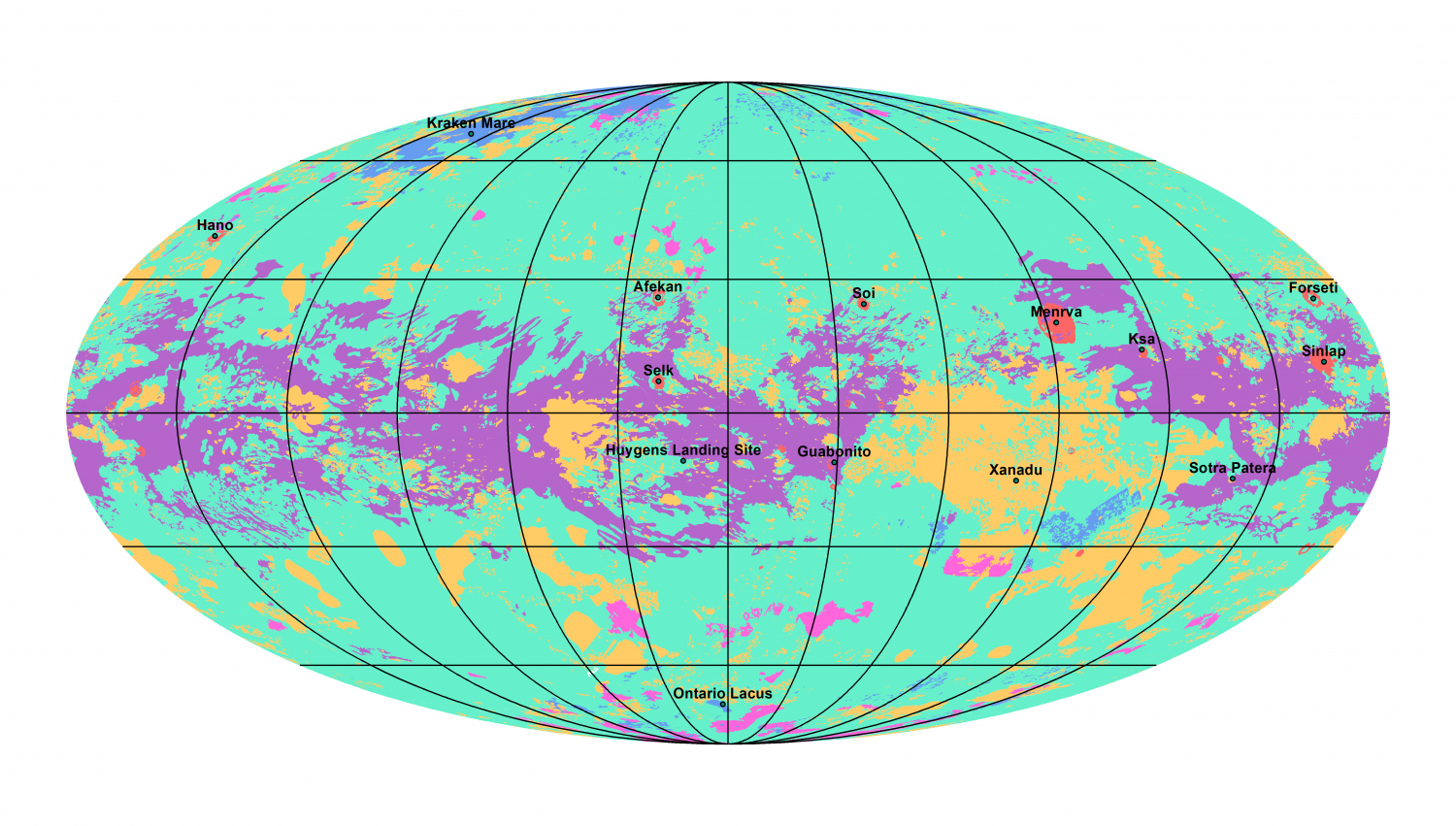- Interview: 'The icy moons are the most interesting places to look for life in the Solar System'
- Cassini: NASA seeks life on Saturn's moons
Titan is a surprisingly complex world. On the surface of this moon of Saturn there are three great seas and a rugged relief, molded by erosion. Vast dunes extend along the line of its equator, large plains in the middle latitudes and steep terrain with large lakes near poles. Rivers of liquid methane and other hydrocarbons have carved narrow and deep canyons in their soil. Now, all these mountain ranges, cliffs and volcanoes have been collected in the first geological map of this star, which is published this Monday in the journal Nature Astronomy.
Titan is the only natural satellite in the Solar System that has a dense atmosphere and the only body outside the Earth that has permanent lakes and seas . That is why it is also an important laboratory to better understand the processes that created our own planet. "The complete mapping of Titan has allowed us to distinguish the different accidents on its surface - mountains, dunes, craters, etc. - and determine their relative ages," explains Anezina Solomonidou, a researcher at the European Center for Space Astronomy (ESAC) in Madrid and co-author of the work. "Future research will be able to benefit from this categorization and thanks to this we will be able to understand the mysterious connection that exists between the crust and the interior, as well as the processes that govern its complex surface."
After identifying the main geological forms that form the star, the authors were able to determine their relative age and geographical distribution. " The dunes and lakes are relatively young, while wet or mountainous terrain are the oldest, " they write in the article. The spatial and overlap relationship between these accidents is key because it allows experts to reconstruct the evolution of the landscape and, thereby, understand the processes that have driven the great changes.
The great liquid masses of Titan are not of water, but of methane and ethane. In its climate - below 184 degrees Celsius - the conditions allow hydrocarbons to coexist in a liquid state, ice and steam. This allows a cycle of climatic and geological phenomena that have given rise to its current form. However, this dynamic also creates a hazy atmosphere that makes it difficult to observe and study the surface. In this case, researchers have used data from infrared and radar instruments on board Cassini , the probe whose mission ended in 2017 with its disintegration in Saturn's atmosphere after 13 years in orbit.
Organic plains
The great lakes of Titan are concentrated at the poles, while most of the rest of the satellite is covered by organic plains, although its exact nature is not yet known: "We know that the material that makes up these plains, which cover much of the Titan's surface is generated by the photochemistry of methane and nitrogen at high altitude in the atmosphere and is deposited on the surface and then processed, "explains Solomonidou. "Our job as of now is to identify it."
Although there are large differences in temperature and environmental conditions, Saturn's moon shares many characteristics with the Earth at the time life arose . That is why Titan arouses great interest among scientists: it is the only satellite that has a dense atmosphere, and the only celestial body - in addition to the Earth - that has liquid deposits on its surface.
"On Earth we cannot vary conditions, such as surface temperature and atmospheric density, to confirm how some geological processes actually occur," explains Rosaly Lopes, a geologist at NASA's Jet Propulsion Laboratory in Pasadena ( California), and first author of the article. "But by resorting to Titan, we can see how those processes that are familiar to us could change when those conditions are altered."
According to the criteria of The Trust Project
Know more- Science and Health
- science
Alicante Background race to get more research on pancreatic cancer
CienciaDelhi restricts the circulation of vehicles after declaring "public health emergency" due to pollution
Conservation Farmers, on a war footing for the brown bear attacks in the Pyrenees

